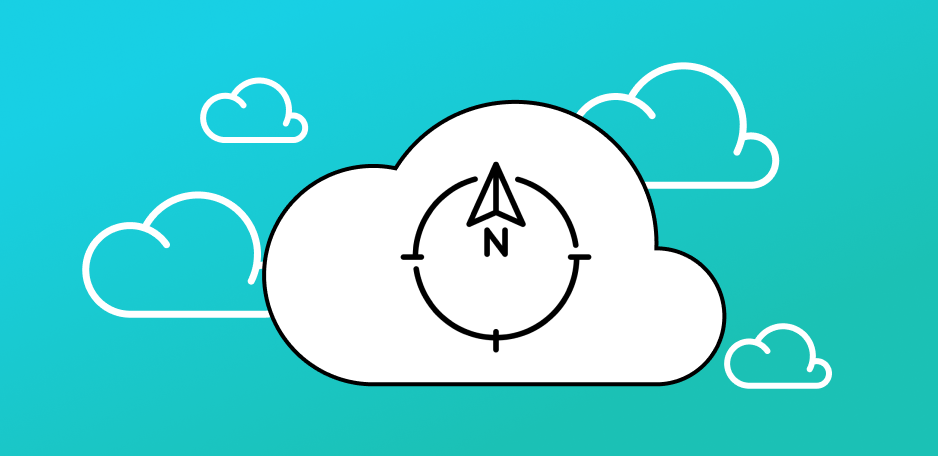Last month, Stanford University published the results of a global study designed to answer the question: How much energy does it really take for a person to have a good, long life? No, the answer isn’t 42. Apparently, it’s 75 — gigajoules, that is.[1] That’s when things like happiness levels, infant mortality rates, and life expectancy rates start to plateau.
Of course, the average American uses nearly four times that amount of energy: a whopping 284 gigajoules per year. In fact, the U.S. consumes 17% of the world’s energy, even though we account for only 4% of the blue orb’s population.[2]
It’s clear we need to do a lot more to reduce our energy gluttony. That’s not a new call to action. But knowing that we could do it without negatively affecting our health, happiness, or prosperity gives me renewed hope.
Cloud costs—in more ways than one
We all know about things we can do as individuals to reduce our energy consumption, like riding a bike instead of driving a car. Meanwhile, corporations can make an even bigger impact, and it’s great to see environmental, social, and governance (ESG) programs becoming more common. But it’s not just companies with smokestacks that need to worry about the E in ESG.
Digital infrastructure is a massive contributor to our tech-obsessed nation’s energy consumption levels. In fact, the collective “cloud” is now a monstrous carbonivore with a bigger carbon footprint than the airline industry.[3] A single data center can consume the equivalent electricity of 50,000 homes—not to mention the millions of gallons of water required for cooling.[4]
So, when you think about managing cloud cost optimizations, you can’t stop with the economic cost to your organization. You’ve got to consider the environmental cost to our planet as well.
Efficiency is a responsibility
As with any resource, companies have a responsibility to use cloud services efficiently, with zero waste. Cloud service providers have a responsibility to be transparent in measuring and reporting their environmental impact. And, ultimately, consumers have a responsibility to hold both cloud service providers and their customers—the brands we love—accountable.
If you knew that Hulu’s streaming service was more cloud-efficient than Netflix’s, would you watch more Hulu? Maybe you should.
If Zoom’s carbon footprint was smaller than WebEx’s, would you host all of your meetings on Zoom? Perhaps that should be a consideration.
As an architect or engineer building a SaaS product, would you use a different cloud service, or design your software differently, if it meant lowering your carbon footprint without affecting performance, scalability, or reliability? I bet you would—given the option.
So, the question becomes: How do you know you’re using cloud as efficiently as possible? As an engineering team, how do you prove your software is cloud-efficient? Inquiring finance teams want to know.
Let cost be your guide
Since cost is a measure of consumption, a cloud cost management product can help you simplify and automate the ongoing task of measuring and optimizing your use of cloud. But remember it’s not just about saving your organization money. It’s about using cloud efficiently and saving our planet’s precious resources, too.
You’ll be doing superhero double-duty if you make cloud cost efficiency a priority for your teams—especially right now, given our current climate crisis and market downturn. With an automated tool you can act fast and make an immediate impact. But long-term, it should always be top-of-mind. Here, we outline three basic rules to work by for continuous cloud cost optimization and efficiency.
Cloud cost efficiency: 3 rules to work by
1. Use (and pay for) only what you need
The beauty of cloud is that it’s a service that gets turned on and off. But, like your lights at home, cloud services should be turned off when not in use. And, as with your recycling and trash bins that get emptied curbside, don’t reserve a large instance when a medium size will do.
How much cloud do you really need? The answer will change over time, but it’s rooted in knowing who—which business unit, team, application, service, etc.—is using which cloud resource for what purpose at any given time. Ideally, no cloud resource should be left untagged, and no cost unallocated, even for shared resources. From there, you can focus on rightsizing and eliminating underutilized and unused resources. Better yet, empower your engineering and DevOps teams with granular, accurate cloud cost data, and you can bet they’ll come up with creative ways to make more cloud-efficient software from day one of the development cycle.
2. Know the impact of your cloud cost optimization
It’s good to see the cloud providers rolling out tools to help customers measure the carbon footprint of their cloud usage. (See resource links below.) Take advantage of those tools to get a reality check on your current impact, and expect cloud cost management products to incorporate this data in the near future.
What’s really cool, though, is to see what happens when you actually make a change for the better. Yes, your organization saves money and reduces its carbon footprint. But you can also see how your good deed impacts specific business metrics, such as Cost of Goods Sold (COGS), employee satisfaction, or even customer experience.
See what pulling different technical levers does to your cloud costs, and you’ll be able to make smarter choices—both top-down and bottom-up. Again, empowering engineering teams with cloud cost data enables greater efficiency from the get-go and faster course corrections when needed.
3. Grow responsibly
Your cloud consumption will increase as your business grows. That is to be expected. But are you growing efficiently?
We know, all too well, that cloud costs can spiral out of control quickly for a growing SaaS business. But with accurate budgeting and forecasting capabilities, you can take advantage of long-term savings plans and reserved instances with confidence. Also, detecting and addressing cost anomalies as quickly as possible will help stabilize growth.
Finally, take those automated recommendations from your cloud cost management product seriously! (Caveat: Some tools are better than others.) The faster you act on cost-cutting alerts, the more money—and energy—you’ll save in the long run.
If you’re having monthly or weekly meetings to review cost reports and decide what infrastructure changes to make, reconsider your process. In between those meetings, your costs continue to go up and you’re wasting precious resources to boot. Once again, giving engineers real-time visibility of cloud cost data removes any bottlenecks.
That’s it. Your corporate credo for cloud cost optimization.
- Use (and pay for) only what you need.
- Know your impact.
- Grow responsibly.
There’s no obvious acronym that I can come up with to make that more memorable, but you got this! Go on, tout your own cloud efficiency chops—your customers, employees, and shareholders will thank you.
Learn more
Do you know How Green Is Your Cloud? Watch Yotascale CEO Asim Razzaq and board member Tim Chou as they discuss ESG and the impacts of micro-wastage on your cloud carbon footprint.
If you’re ready to start making an impact on your cloud carbon footprint by reducing macro- and micro-wastage in your cloud environment, contact us to learn more.
Handy resources
UN Carbon Footprint Calculator for Households
AWS Customer Carbon Footprint Tool
Azure Emissions Impact Dashboard
For more details, I highly recommend reading the excellent and freely available case study by MIT anthropologist Steven Gonzalez Monserrate published in January 2022, “The Cloud Is Material: On the Environmental Impacts of Computation and Data Storage” or perhaps the more digestible excerpt of it published in the MIT Press Reader. It was the inspiration for this post.
[1] https://esajournals.onlinelibrary.wiley.com/doi/10.1002/ecs2.3978
[2] https://www.eia.gov/tools/faqs/faq.php?id=87&t=1
[3] https://mit-serc.pubpub.org/pub/the-cloud-is-material/release/1
[4] Ibid.

